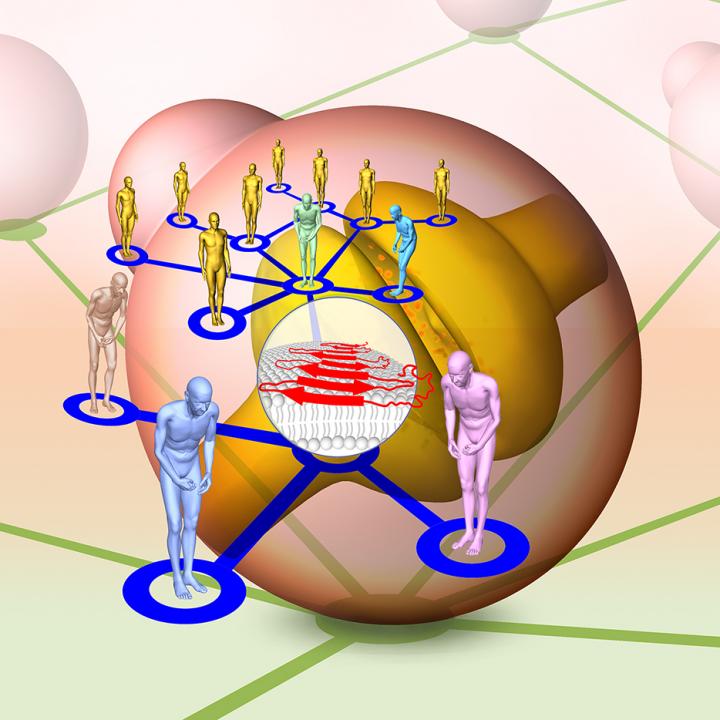



Business Inquiry
Global:
Email:marketing@medicilon.com
+1(781)535-1428(U.S.)
0044 7790 816 954 (Europe)
China:
Email: marketing@medicilon.com.cn
Tel: +86 (21) 5859-1500



Through two publications and a large collaboration, led by researchers at Whitehead Institute and Massachusetts Institute of Technology (MIT), investigators have just described their use of a suite of novel biological and computational methods to shed light on how the misfolding of α-synuclein protein in neurons relates to the growing number of genes implicated in Parkinson’s disease (PD). The findings from these studies were published recently in Cell Systems in articles entitled “Genome-Scale Networks Link Neurodegenerative Disease Genes to α-Synuclein through Specific Molecular Pathways” and “In Situ Peroxidase Labeling and Mass-Spectrometry Connects Alpha-Synuclein Directly to Endocytic Trafficking and mRNA Metabolism in Neurons.”

The scientists initiated their analysis by creating two ways to systematically map the footprint of α-synuclein within living cells. “In the first paper, we used powerful and unbiased genetic tools in the simple Baker’s yeast cell to identify 332 genes that impact the toxicity of α-synuclein,” explained lead author for one of the papers Vikram Khurana, M.D., Ph.D., principal investigator within the Ann Romney Center for Neurologic Diseases at Brigham and Women’s Hospital and the Harvard Stem Cell Institute, and first and co-corresponding author on the studies. “Among them were multiple genes known to predispose individuals to Parkinson’s—so we show that various genetic forms of Parkinson’s are directly related to α-synuclein. Moreover, the results showed that many effects of alpha-synuclein have been conserved across a billion years of evolution from yeast to human.”
Medicilon's Pharmacodynamics Department can deliver multiple nervous system models based on anti-depressants, anti-Alzheimer's drugs, sedative-hypnotic and anti-anxiety drugs, analgesics, anti-convulsants, anti-Parkinson's drugs, and anti-schizophrenia drugs. Those models can effectively evaluate innovative drugs at the molecular and cellular level, as well as ex vivo, and in vivo. The Department's advanced Cognition Wall Discrimination learning ensures uninterrupted tracking to determine changes in memory function in double transgenic mice during early-stage Alzheimer's disease and eliminates the disadvantages of the Morris water maze (MWM) in stress interference and short-time tests.
The investigators also looked at mapping all of the interactions of α-synuclein and its locale within neurons at various time points. This was achieved without disturbing the native environment of the neuron, by tagging α-synuclein with an enzyme—APEX—that allowed proteins less than 10 nanometers away from α-synuclein to be marked with a trackable fingerprint.
“In the second paper, we created a spatial map of α-synuclein, cataloging all the proteins in living neurons that were in close proximity to the protein,” remarked lead author Chee Yeun Chung, Ph.D. former Whitehead Institute senior research scientist and now scientific co-founder and associate director at Yumanity Therapeutics. “As a result, for the first time, we were able to visualize the protein’s location, at minute scale, under physiologic conditions in an intact brain cell.”
Interestingly, the maps the researchers derived from these two processes were closely related and converged on the same Parkinson’s genes and cellular processes. Whether in a yeast cell or a neuron, α-synuclein directly interfered with the rate of production of proteins in the cell and the transport of proteins between cellular compartments.
“It turns out the mechanisms of toxicity of the misfolded protein are closely related to which proteins it directly interacts with, and that these interactions can explain connections between different Parkinson’s genetic risk factors,” Dr. Khurana noted.
In assembling the massive amount of data they collected, the investigators needed to address two major challenges that scientists often face when generating large datasets of individual genes and proteins in model organisms like yeast: How to assemble the data into coherent maps? And how to integrate information across species, in this case from yeast to human?
“First, we had to figure out much better methods to find human counterparts of yeast genes, and then we had to arrange the humanized set of genes in a meaningful way,” explained co-author Jian Peng, Ph.D., assistant professor of computer sciences at University of Illinois, Urbana-Champaign. “The result was TransposeNet, a new suite of computational tools that uses machine learning algorithms to visualize patterns and interaction networks based on genes that are highly conserved from yeast to humans—and then makes predictions about the additional genes that are part of the α-synuclein toxicity response in humans.”
This new analysis produced networks that mapped out how α-synuclein is related to other Parkinson’s genes through well-defined molecular pathways. “We now have a system to look at how seemingly unrelated genes come together to cause Parkinson’s and how they are related to the protein that misfolds in this disease,” Dr. Khurana stated.
To confirm their work, the researchers generated neurons from Parkinson’s patients with different genetic forms of the disease. They showed that the molecular maps generated from their analyses allowed them to identify abnormalities shared among these distinct forms of Parkinson’s. Prior to this, there was no obvious molecular connection between the genes implicated in these varieties of PD. “We believe these methods could pave the way for developing patient-specific treatments in the future,” Dr. Khurana concluded.
 Relevant
news
Relevant
news